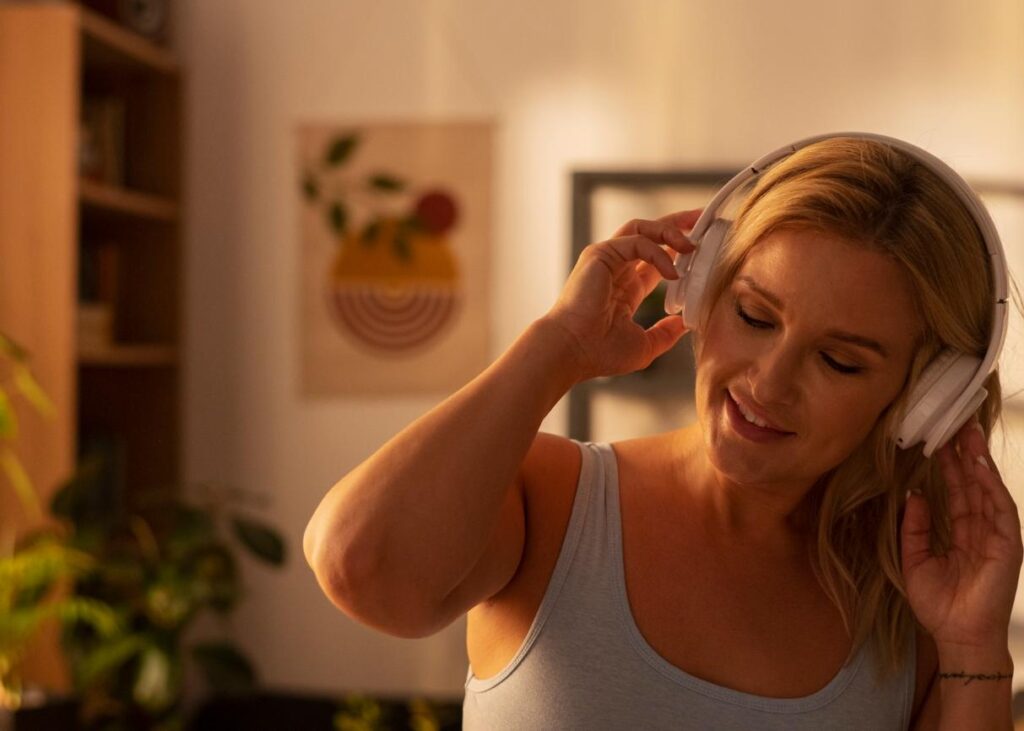In our constantly buzzing world, true silence has become a rare luxury. For those of us experiencing that persistent ringing, whooshing, or buzzing in our ears, the concept of silence might seem like a distant memory. But what if dedicating just five minutes daily to your ear wellness could help you rediscover moments of acoustic peace?
The Noise We’ve Normalized
Think about it – when was the last time you actually experienced complete silence? Between traffic noise, office chatter, household appliances, and the perpetual notifications from our devices, our ears rarely get a break. For the 50+ million Americans living with ear ringing concerns, this constant barrage can feel particularly overwhelming.
“Most people don’t realize how little rest their auditory system gets until they consciously try to create a quiet environment,” says sound awareness expert Lisa Collins. “Our ears are processing input 24/7, even when we’re sleeping.”
The Toll of Constant Sound
Unlike our eyes, which we can close at will, our ears don’t come with natural “off switches.” This non-stop sound processing can lead to:
- Increased stress levels
- Difficulty concentrating
- Sleep disruption
- Heightened sensitivity to sounds
- Mental fatigue
- Intensified awareness of ear ringing
Many of us have adapted to this constant noise pollution, but our auditory system pays the price. Just like other parts of our body need rest and recovery, our ears and auditory processing centers benefit tremendously from deliberate periods of quiet.
The 5-Minute Ear Relaxation Practice
Creating a daily practice of ear relaxation doesn’t require expensive equipment or hours of your time. This simple 5-minute routine can become your ears’ daily vacation:
1. Find Your Quiet Space (30 seconds)
Choose a location with minimal background noise. Early morning or late evening typically offers the quietest windows of time. If complete silence isn’t possible, use foam earplugs to reduce ambient noise (just don’t insert them too deeply).
2. The Acoustic Wind-Down (1 minute)
Sit comfortably and take slow, deep breaths. With each exhale, imagine the muscles around your ears softening. Many people unknowingly carry tension in the jaw and temples, which can affect how we process sound.
3. Gentle Ear Massage (1 minute)
Using your fingertips, apply light pressure in small circular motions around your ears – start at the ear lobes, work up around the outer ear, and finish with gentle pressure on the mastoid bone behind each ear. This improves circulation to the area and releases physical tension.
4. Sound Awareness Practice (2 minutes)
Rather than trying to “not hear” sounds (which often increases focus on ear ringing), practice neutral awareness:
- Notice any sounds present both inside and outside your body
- Acknowledge each sound without labeling it as “good” or “bad”
- Visualize sounds as passing clouds – present but moving through your awareness
5. Transition Back (30 seconds)
Before ending your practice, set an intention to carry this relaxed auditory awareness into your day. Gradually reintroduce normal activity rather than jumping immediately back into a noisy environment.
Building Your Sound Environment Toolkit
Beyond the 5-minute practice, consider these additions to your ear comfort toolkit:
White Noise Alternatives
While white noise machines are popular, explore these sound options that many find more soothing:
- Pink noise (lower frequency than white noise)
- Brown noise (even lower frequencies, like distant thunder)
- Green noise (mimics natural environmental sounds)
- Nature sounds (particularly rain or gentle streams)
Acoustic Hygiene Practices
- Use the 60/60 rule with headphones: no more than 60% volume for 60 minutes at a time
- Build 10-minute sound breaks into your day when possible
- Create sound boundaries in your home (designating quiet zones or hours)
- Consider sound-absorbing materials like curtains, rugs, and acoustic panels for noisy spaces
Mindful Sound Consumption
Just as we’re becoming more aware of our food and media consumption, “sound diets” are gaining recognition for their importance to overall wellness:
- Audit your daily sound exposure – which noises are necessary and which could be eliminated?
- Schedule “device-silent” periods beyond just sleeping hours
- Prioritize voice-to-voice conversations over background TV/videos when spending time with others
- Explore how different music genres affect your ear comfort and general stress levels
The Ripple Effects of Ear Relaxation
Participants who commit to daily ear relaxation practices frequently report benefits extending far beyond the ears themselves:
“I started doing this for my ear ringing, but I’ve noticed I’m sleeping better and feeling less irritable throughout the day,” shares Michael T., who has maintained the practice for three months.
Others note improved concentration, reduced overall tension, and a heightened appreciation for subtle sounds that were previously masked by louder environmental noise.
When to Consider Additional Support
While relaxation practices benefit everyone, certain ear-related experiences warrant professional guidance:
- Sudden changes in hearing or ear sensations
- Ear discomfort accompanied by dizziness
- One-sided ear ringing or fullness
- Ear concerns following head trauma or loud noise exposure
A hearing care professional can provide personalized guidance for your specific situation.
Getting Started Today
The beauty of this practice lies in its simplicity. No special equipment needed, no subscriptions required – just your commitment to giving your hard-working ears five minutes of focused care each day.
Begin by trying the practice once daily for one week. Many people find mornings ideal, setting a tone of acoustic mindfulness for the day ahead. Others prefer evenings, helping transition from day’s noise to night’s rest.
Track your experience in a simple journal – noting not just changes in ear sensations but also mood, concentration, and stress levels throughout the day.
Remember, consistency matters more than duration. A daily five-minute practice yields more benefits than an occasional longer session.
The Silence Beneath the Noise
For those experiencing ear ringing or sound sensitivity, true silence may indeed be elusive. But many practitioners discover something equally valuable through regular ear relaxation: a changed relationship with sound itself.
As one practitioner beautifully expressed, “I haven’t eliminated the ringing, but I’ve found peaceful coexistence with it. Some days I even forget it’s there.”
In our noise-saturated world, perhaps that represents its own form of silence – not the absence of sound, but the presence of acoustic peace.

Disclaimer: This article is intended for informational purposes only and does not constitute medical advice. The practices described are complementary approaches to ear wellness and are not intended to diagnose, treat, cure, or prevent any condition. If you’re experiencing hearing concerns, please consult with a qualified healthcare provider for proper evaluation and guidance tailored to your specific situation.



